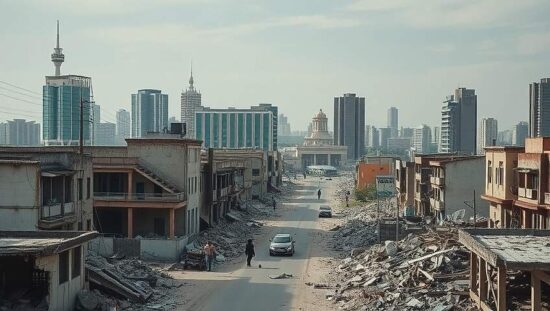A devastating fire has engulfed residential buildings in Hong Kong’s Tai Po district, resulting in at least 36 fatalities and leaving 279 individuals still unaccounted for. Local media reports indicate that 29 people have been hospitalized, with seven listed in critical condition. The rapid spread of the fire, which erupted for presently unknown reasons, has prompted widespread shock and triggered questions regarding building safety regulations and oversight.
The affected buildings were undergoing extensive renovations, enveloped in bamboo scaffolding that appears to have contributed significantly to the fire’s speed and intensity. This detail has ignited scrutiny of construction practices and the enforcement of fire safety protocols during renovation periods, particularly in densely populated urban areas. Critics are already questioning whether the bamboo scaffolding acted as a conduit for the flames, rapidly accelerating its progression through the interconnected buildings.
Hong Kong’s Chief Executive, John Lee Ka-chiu, has declared the incident a “massive catastrophe” and suspended election campaign activities ahead of the December 12th ballot. The decision to halt campaigning reflects the gravity of the situation and the sensitivity surrounding public mourning. Chinese President Xi Jinping has also conveyed his condolences.
Beyond the immediate tragedy, the fire is likely to further exacerbate existing tensions within Hong Kong’s political landscape. The disaster provides a stark reminder of the challenges faced by the city’s governance, particularly concerning infrastructure and public safety in a region with a high density of aging buildings. The incident is almost certain to fuel calls for a comprehensive review of building codes, construction practices and emergency response protocols and may become a key issue during the forthcoming elections, potentially impacting public trust in the government’s ability to ensure citizen safety. The sheer scale of the loss and the ongoing search for missing persons underscore the profound human cost of inadequate oversight and potential systemic failures within the city’s regulatory framework.





